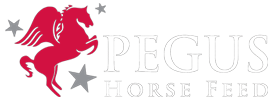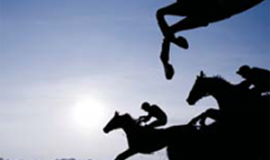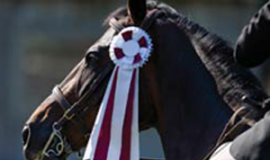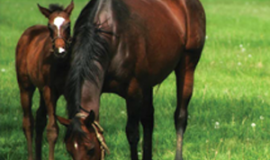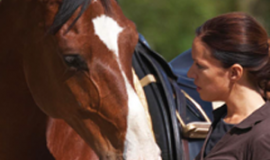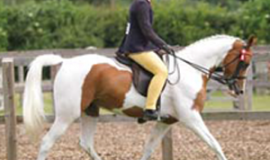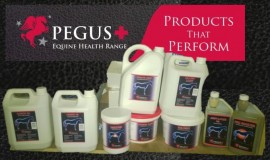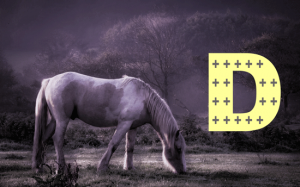 Vitamin D?
Vitamin D?
Vitamin D is vital for calcium homeostasis in animals and man. A deficiency may lead to bone deformities, commonly called rickets, resulting from decreased concentrations of calcium and phosphorus in cartilage and bone. The vitamin is found as vitamin D2 (Ergocalciferol) in plants and as vitamin D3 (Cholecalciferol) in feeds of animal origin, especially fish. The two forms, D2 and D3 have similar biological activity; 1 µg of D2 or D3 equals 40 international units (IU) vitamin D. During summer, exposure to sunlight leads to production of vitamin D3 in the skin. This means that horses exposed to sunlight have no need for additional vitamin D from their ration. In winter however, sunlight is sparse, especially in northern altitudes and vitamin D should be supplied through the daily ration.
Role of vitamin D in the body
In the body, the D vitamins are transformed into the biologically active form 1.25(OH)2D when needed. This molecule acts as a hormone, targeting the intestines, kidneys and bone. It facilitates calcium absorption, reabsorption of calcium from the kidneys and influences both mobilization and reabsorption of calcium and phosphorus from bone. In addition to the role of vitamin D in calcium metabolism, the vitamin also influences cell growth and differentiation.
Requirements for vitamin D
Horses exposed to sunlight several hours a day will get enough vitamin D from the sun, and no extra supplements should be needed. But for horses with less exposure to sunlight, NRC 2007 defines specific requirements which should be provided with the feed to maintain adequate vitamin D levels:
– For adult horses at maintenance, in training, gestation and in lactation as well as for stallions in the mating season the daily requirements are set to 6.6 IU vitamin D per kg body weight. Therefore, typical daily intakes should be between 3000 and 4000 IU for a 500 kg horse.
– For young growing horses the requirements are set to 22.2, 17.4, 15.9 and 13.7 IU per kg body weight for 0-6, 7-12, 13-18, and 19-24 months of age.
– For young horses in training the requirements are 20 IU per kg body weight (applied only to horses older than 12 months of age).
Vitamin D in horse feeds
Compound feeds for horses most often have added vitamin D3. The amounts added may vary, but are commonly between 500 and 2000 IU per kg.
Grains contain very little or no vitamin D. Fresh grasses, haylage and hay contain vitamin D2 in significant, but varying amounts. In general, vitamin D levels in grass increase in the later stages of maturity, meaning that late cut grass will have more vitamin D than early cut grass. When hay or haylage are dried in the sun, more vitamin D2 will be formed, depending on the duration of exposure to sunlight.Vitamin D is normally not analyzed in forage samples due to cost. In the planning of rations, horse owners therefore have to rely upon mean values given in the literature. In PC-Horse we use values for vitamin D in grass, haylage and hay according to Ballet et al., 2000.
Table 1. Mean values for vitamin D in grass, haylage and hay, IU per kg dry matter. (Ballet et al., 2000).
Grass* Haylage Hay
Vitamin D, IU/kg DM 365 440 1155
*Grass and legumes
By using PC-Horse to formulate rations for your horses you will immediately see how much vitamin D your horses get in their daily ration. You will also be warned if the amounts are out of the recommended range. Vitamin D is one of the vitamins which accumulate in body fat, and can be toxic if fed in too high amounts over prolonged periods of time. PC-Horse warns against Vitamin D overdosing.
Reference:Ballet, N., J.C. Robert & P.E.V. Williams. 2000. Vitamins in forages. page 399-431 In: Givens, D.I., E. Own, R.F.E. Axford & H.M. Omed (Eds.). 2000. Forage evaluation in ruminant nutrition. CABI Publishing
——————————————————————————–
What does this mean in practice?
Daily intake of roughage varies based on feed quality, production classes, individual appetite and each individual’s place in the herd hierarchy. This means that we must observe horses in a herd closely and make corrections to the feed offered each individual at night-time or early morning to avoid some individuals growing too fat or too thin.
Contact Pegus Horse Feed www.pegus.ie e-mail info@pegus.ie
